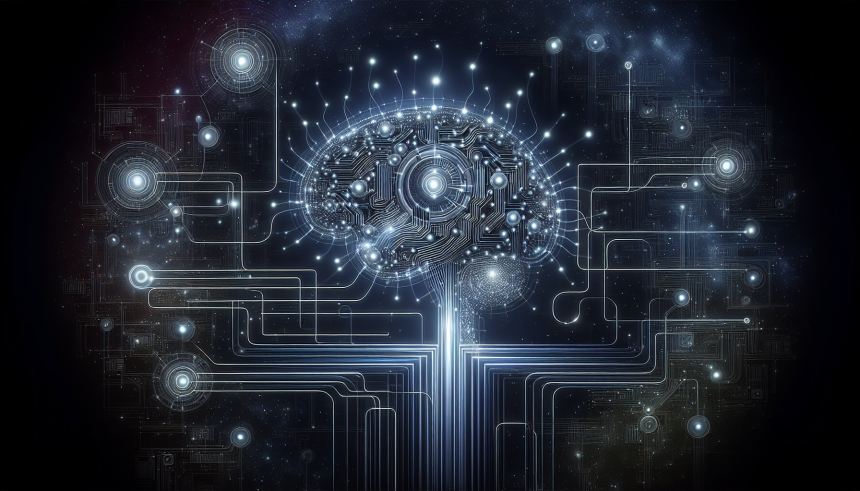The Future of Integration: AI’s Role in Bridging Systems
Understanding System Integration
System integration is the process of connecting different computing systems and software applications to work together seamlessly. As businesses evolve, they increasingly rely on various tools and platforms, creating a need for effective integration. Traditionally, this has required labor-intensive manual processes or expensive custom development, leading to delays and increased costs. The emergence of Artificial Intelligence (AI) offers new possibilities for achieving seamless integration.
AI and Automation in Integration
Automation is a core advantage of AI, fundamentally transforming integration processes. With AI-driven solutions, organizations can automate data transfers, system updates, and workflows, leading to significant efficiency gains. For instance, AI can analyze patterns in data flow and optimize integration processes in real-time, reducing the risk of errors and increasing reliability.
RPA and AI: Robotic Process Automation (RPA) combined with AI capabilities can enable smarter decision-making and error correction during integration. Tasks that were previously repetitive are now handled by AI algorithms, drastically reducing the time and resources required for integration.
Predictive Analytics for Enhanced Decision-Making
In a data-driven landscape, predictive analytics powered by AI can analyze vast amounts of data from various systems to forecast future integration needs. Organizations can leverage these insights to identify potential bottlenecks or issues before they impact operations. By employing models that utilize historical data, businesses can better forecast system demands and ensure their integrations are always aligned with performance expectations.
Natural Language Processing in Integration
Natural Language Processing (NLP) technology enables systems to interpret and respond to human language. This capability is particularly beneficial in integration as it allows disparate systems to communicate more effectively. For instance, AI can interpret user queries in plain language and convert them into executable integration commands.
Chatbot Integration: By using chatbots powered by NLP, companies can streamline customer service and internal communication. These bots can interpret requests and automatically initiate integration processes, such as updating records or retrieving data from another system.
Machine Learning for Continuous Improvement
Machine Learning (ML) allows systems to learn from data over time, improving integration effectiveness without constant human oversight. By leveraging algorithms that analyze historical performance and current conditions, ML can identify the most efficient integration pathways and suggest optimizations.
Adaptive Integration: This form of integration uses learning algorithms that adapt to changes within business processes, making real-time adjustments as necessary. As new applications are introduced or existing ones are modified, machine learning ensures integration systems remain robust and efficient.
The Role of APIs and AI-Driven Middleware
APIs (Application Programming Interfaces) serve as the backbone of integration, allowing different systems to communicate. AI-driven middleware enhances traditional APIs by offering smarter connection capabilities, data transformation, and protocol handling.
Dynamic API management: AI can assist in managing API ecosystems by optimizing load balancing and identifying underused interfaces. This proactive management helps maintain system health and enhances the performance of interconnected platforms.
Security Considerations in AI-Enhanced Integration
As systems become increasingly interconnected, security concerns also grow. AI can play a pivotal role in securing integrations by predicting threats and automating responses to potential breaches. By analyzing traffic patterns and user behaviors, AI-driven systems can detect anomalies and trigger alerts, ensuring that data remains protected.
Anomaly Detection: Integrating AI with traditional cybersecurity measures can enhance threat detection and response times. Real-time monitoring powered by AI can help reconcile discrepancies in data activity or unauthorized access attempts.
Collaboration Tools Powered by AI
Effective collaboration tools are crucial for ensuring proper integration across teams and departments. AI can optimize project management platforms, enabling better tracking of dependencies, milestones, and communication.
Smart Collaboration: Systems that utilize AI can provide teams with insights regarding optimal project timelines and resource allocation. By intelligently suggesting tasks or flagging potential delays, AI helps teams navigate complex integrations seamlessly.
The Impact of AI on Legacy Systems
Many organizations still rely on legacy systems that are not built for modern integration needs. AI can help bridge the gap between old and new technologies by automating data extraction, transformation, and loading (ETL) processes. This capability allows businesses to leverage legacy data while adopting modern solutions without extensive rewrites or migrations.
Preserving Valuable Data: AI-driven tools can analyze legacy systems to identify valuable data that can be transferred to modern platforms, ensuring that important historical insights are not lost in the transition.
Scalability and Flexibility in Integrated Systems
As businesses grow, their integration needs tend to evolve as well. AI-powered integration solutions can scale based on demand, allowing organizations to maintain efficiency even as the complexity of their systems increases. This scalability ensures that as new tools and applications are added, integration remains seamless.
Cloud Integration: With the rise of cloud technologies, AI aids in seamlessly integrating on-premise and cloud-based systems. This flexibility allows businesses to expand their capabilities without significant disruption.
Customization Through AI
Every organization has unique integration needs based on their specific operations and technologies. AI’s role in customizable integration solutions is profound, allowing for tailored approaches that align with business objectives.
Configurable Workflows: AI can learn from user interactions to create customized workflows that meet specific requirements, eliminating the need for one-size-fits-all solutions. This adaptability is essential, especially for complex organizations with diverse integration needs.
Real-Time Data Synchronization
AI’s ability to analyze and process data in real-time enhances data synchronization across systems. Organizations can ensure that all systems are updated simultaneously, reducing the data lag that can lead to errors.
Instant Feedback: This real-time capability allows businesses to act on the latest information, thus improving decision-making speed and accuracy, especially in operational contexts such as inventory management or sales.
Conclusion
As businesses face an increasingly complex landscape of interconnected systems, the role of AI in integration will continue to grow in significance. By automating processes, enhancing security, and providing real-time insights, AI bridges the gap between disparate systems, promoting a more cohesive operational environment. The future of integration lies in harnessing these technologies to create smarter, more efficient, and increasingly dynamic systems that meet the demands of modern business practices.


